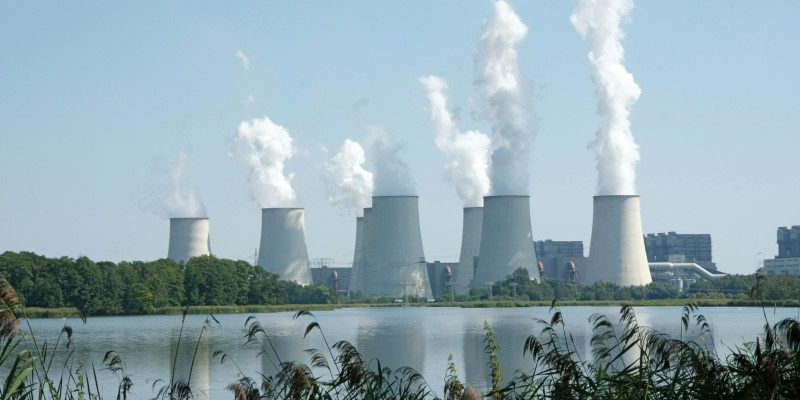Federal Environment Minister Svenja Schulze said: "The climate balance for 2017 sends a number of different signals. We have achieved a great deal in renewable energy development. We will be making further advances through special new calls. The trend in the transport sector is unfortunately still headed in the wrong direction. Climate mitigation and clean air calls for a fundamental turnaround here. This must become a priority in this legislative term. We will be preparing climate protection legislation this year which will be adopted in 2019. In so doing, we will ensure that we are able and committed to reaching the 2030 goal."
The most significant decline in emissions was in the energy sector, where emissions decreased by 13.7 million tonnes (- 4.1%) compared to the previous year. The main reason is that less hard coal was used to generate electricity due to the high level of wind power feed-in. Also, hard coal-operated power plants with a total capacity of more than 3 gigawatts were either decommissioned or put on the grid reserve in 2017. Two lignite-powered power plants were put on safety standby in the fourth quarter of the year.
In the transport sector, emissions rose by 3.8 million tonnes in 2017, reaching 170.6 million tonnes (+ 2.3%). One reason, according to data from the Federal Motor Transport Authority, is that the stock of private vehicles grew by some 1.5 per cent in 2017. More cars on the roads means more mileage driven and therefore higher greenhouse gas emissions. The stock of heavy good vehicles and articulated lorries also rose considerably (+4.1%; +4.4%). Combined with healthy economic growth, this resulted in more freight transport on roads. The shrinking share of diesel passenger cars and the growing share of petrol-fuelled cars in new vehicle registrations are not a significant factor in the rise of emissions. Coupled with the trend to more powerful engines in cars, this accounted for an increase of no more than 0.2 million tonnes in 2017.
UBA President Maria Krautzberger said: "It is an error to believe that we can only reach our climate goals with diesel engines. We need fewer and much more economical vehicles in general, regardless of their fuel. The current CO2 target values for 2025 and 2030 which the EU Commission has proposed for the passenger car and light commercial fleet numbers do not go far enough. We must react quickly in this regard; otherwise we cannot achieve our defined 2030 climate goals for transport."
In the industrial sector, emissions rose by 2.5 per cent to 192.9 million tonnes due to the robust economy. Of that amount, 1.6 per cent is accounted for by a rise in process emissions and 3 per cent by energetic emissions in the manufacturing industry. Refineries, the steel and mineral industries are expected to see higher rates of production. The manufacturing trend in the chemical industry also resulted in a slight rise in emissions.
While GHG emissions from agriculture remained virtually stagnant, there was a decline of 4.3 per cent in the waste management industry compared to the previous year. This steady decline is due chiefly to developments in landfilling: since 2005 biodegradable waste may no longer be consigned to landfill in Germany, which has had positive effects along with waste separation and recycling practices.
Accuracy of the data
The above results represent the first detailed estimates and are to be considered a forecast rather than final figures. They are derived using a system of modelling and extrapolated trends based on the detailed inventory of GHG emissions published in January 2016. Other data includes preliminary data published for 2017 from the Working Group on Energy Balances, official monthly statistics on energy consumption, production data from industrial associations and other information (e.g. degree-day figures). Due to this calculation method the accuracy of estimates is generally lower than in detailed calculations.
The estimate for 2017 has a higher degree of uncertainty than those of previous years. The Kraftwerksummeldungen between the energy and industry sectors for 2016 could not be taken into account adequately in the current report because of the status of the data. This is why the emissions for industrial combustion in 2017 was estimated somewhat higher than otherwise. It is assumed there will be a slight decline in emissions from households due to the weather throughout the year. Because of the statistical differences for natural gas in this latter sector, that development is not reflected.
The first verified emissions data for installations subject to emissions trading in the energy and industry sectors are published every year on 1 April. Nearly 51 per cent of total GHG emissions in Germany in 2016 were grouped in the emissions trading sector. The German Emissions Trading Authority (DEHSt) at UBA publishes a detailed annual inventory report every May. The German Environment Agency will publish a complete official inventory on GHG emissions in Germany for 2017 on 15 January 2019 which is submitted to the European Commission.
 Click to enlarge
Click to enlarge







修改评论